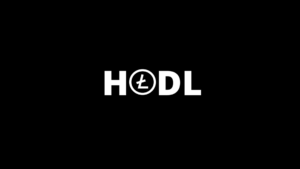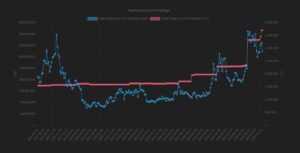Capital inflows into Bitcoin and crypto funds have returned over the last month, with investors betting that the local floor price is in.
In brief
- Inflows into cryptocurrency funds have returned over the last 4 weeks, with investors betting that the bottom is in.
- Over the course of May, weekly inflows into crypto funds averaged at $66.5 million, in contrast to $49.6 million in average weekly outflows in April.
- Bitcoin-based funds have received the lion’s share of capital inflows as macro economic conditions temper risk-on sentiment.
Cryptocurrencies aren’t going away. Buy Bitcoin & Litecoin here.
Throughout May, weekly inflows into bitcoin and crypto funds averaged at around $66.5 million, compared to $49.6 million outflows the month before, per data from research firm CryptoCompare.
Institutional Bitcoin flows have been trickling higher ever since BTC swooped closer to $30,000. Investors prioritised Bitcoin over Ethereum and altcoins, which took the lion’s share of capital as institutional dip buying activity reached $274 million at the height of the TerraLuna scandal.
Weekly Fund Inflows total $100 million
According to the latest CoinShares report, investors piled into Bitcoin-funds on average despite the range-bound choppy price-action last week.

Inflows totalled at $126 million last week, bringing total inflows year-to-date passed the half a billion mark at $506 million. Conversely, short Bitcoin saw inflows totalled at just $1.3m last week.
At the same time, outflows from Ethereum endured relative to Bitcoin, totalling at $32 million. This marks 9 straight weeks of institutional outflows, characterising a negative outlook for the second largest cryptocurrency on the market.
Bitcoin’s relative safety in the risk-on asset class is also reflected in the Bitcoin Dominance chart (BTC.D) which surged 15% since May 11. In other words, Bitcoin continues to take the lion’s share of crypto capital flows as altcoin flows remain relatively muted.
Investors tend to reduce exposure to risky assets as markets adjust to persistently high inflation, interest-rate hike policies and global recession concerns. Germany’s inflation figures reached 7.9% in May, higher than 1970s data as the bloc struggles to function without a monetary toolbox.
With interest rates at zero percent, the ECB is stuck between a rock and a hard place to combat inflation without causing a recession.
Join the telegram channel for updates, charts, ideas and deals.
Did you like the article? Share it!


